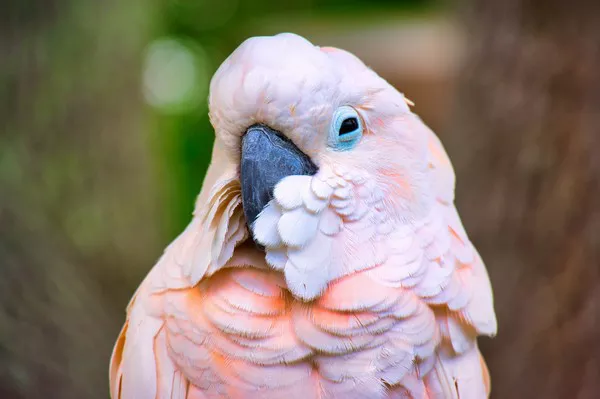Sun conures, with their vibrant plumage and engaging personalities, are among the most popular pet parrots. These colorful birds, native to northeastern South America, are known for their intelligence, social behavior, and affectionate nature. Understanding the appropriate age to transition a sun conure from hand-feeding to independent eating is crucial for their health and development. This article provides insights into the characteristics and habits of sun conures and offers guidance on the weaning process.
Characteristics and Living Habits of Sun Conures
Physical Characteristics of Sun Conures
Sun conures (Aratinga solstitialis) are small, strikingly colorful parrots known for their vivid orange and yellow feathers, contrasted by bright green and blue accents. They typically measure about 12 to 15 inches in length from beak to tail and weigh between 4 to 6 ounces. Their bright, cheerful plumage is not just for show; it plays a role in their social interactions and mating displays.
These birds have a robust and agile build, suited for their natural habitat in the tropical rainforests and savannas of their native range. Their strong beaks and sharp claws are adapted for climbing, foraging, and cracking nuts, which are essential parts of their diet in the wild.
Social Behavior and Communication
Sun conures are highly social birds that thrive on interaction with their flock, which in captivity often means their human caregivers. They are known for their vocal nature, producing a range of sounds from cheerful chirps to loud, attention-grabbing calls. Their social behavior is reflected in their need for daily interaction and stimulation.
In the wild, sun conures live in large, noisy flocks that communicate through vocalizations and physical displays. They use these methods to strengthen social bonds, establish territories, and find food. This social nature translates well into captivity, where they require ample social engagement to stay happy and healthy.
Diet and Feeding Habits
Sun conures are primarily frugivores, meaning their diet in the wild consists mainly of fruits, seeds, nuts, and some vegetables. They also consume insects and small invertebrates to meet their nutritional needs. In captivity, their diet should be balanced and varied, including high-quality pellets, fresh fruits and vegetables, and occasional seeds.
Hand feeding plays a crucial role in the early stages of a sun conure’s life, particularly for those that are hand-raised. Understanding when to transition from hand feeding to independent eating is essential for the bird’s health and well-being.
The Hand Feeding Process
The Importance of Hand Feeding
Hand feeding is a critical part of raising sun conures, especially for those who are hand-reared or have been separated from their parents early. This process ensures that the chicks receive proper nutrition and develop a strong bond with their caregivers. Hand feeding also allows for early socialization, which is vital for the bird’s overall development.
When hand feeding, it’s essential to use a specially formulated formula that meets the nutritional needs of the growing chick. The feeding process typically involves using a syringe or feeding tube to provide the formula at regular intervals, mimicking the feeding behavior of the parent birds.
Monitoring Growth and Development
As sun conures grow, their nutritional needs and developmental milestones change. Monitoring their weight, feather development, and overall health is crucial during the hand-feeding stage. Regular weigh-ins and observations help ensure that the bird is gaining weight at a healthy rate and is developing properly.
Feather development is a key indicator of a sun conure’s readiness to transition to solid food. As the chick grows and molts its down feathers, it’s an indication that it is approaching the stage where it can begin to eat independently.
Transitioning from Hand Feeding to Independent Eating
Signs That It’s Time to Wean
The weaning process is a gradual transition from hand feeding to eating solid foods. Several signs indicate that a sun conure is ready to begin this process:
Increased Interest in Solid Food: When the chick starts showing curiosity and interest in solid foods, such as fruits, vegetables, and seeds, it is a sign that it is ready to start the weaning process.
Decreased Dependence on Hand Feeding: If the sun conure begins to reduce the amount of formula it consumes and starts eating more solid food, it indicates that it is ready for a gradual reduction in hand feeding.
Feather Development: As the chick molts and develops adult feathers, it becomes more capable of handling solid food. Feather development is a good indicator that the bird is approaching readiness for weaning.
Gradual Reduction of Hand Feeding
Weaning should be a gradual process to ensure that the sun conure adapts well to eating solid food. Start by offering small amounts of solid food while continuing to provide hand-fed formula. Over time, gradually reduce the amount of formula and increase the variety of solid foods.
Introducing Solid Foods: Begin with soft, easily digestible foods such as mashed fruits, cooked vegetables, and soft pellets. Gradually introduce a variety of foods to help the chick adjust to different textures and flavors.
Reducing Formula Feedings: As the sun conure begins to eat more solid food, reduce the number of formula feedings and the amount of formula given. This gradual reduction helps prevent digestive issues and ensures the bird transitions smoothly to a solid food diet.
Monitoring Health and Behavior: Keep a close eye on the bird’s health and behavior during the weaning process. Ensure that the sun conure is eating and digesting the solid foods well and maintaining a healthy weight.
Ensuring Proper Nutrition During Weaning
During the weaning process, it’s crucial to provide a balanced and nutritious diet to support the sun conure’s growth and development. Offer a variety of foods that meet their nutritional needs, including:
High-Quality Pellets: Pellets should be the primary food source, as they provide a balanced diet with essential vitamins and minerals.
See Also: How Do I Know if My Sun Conure Is Happy?
Fresh Fruits and Vegetables: Provide a variety of fresh fruits and vegetables to ensure that the sun conure receives a range of nutrients. Avoid offering foods that are toxic to birds, such as avocados and chocolate.
Seeds and Nuts: Seeds and nuts can be offered in moderation as treats or additional sources of nutrition. Ensure that they are unsalted and free from additives.
Common Challenges During the Weaning Process
Dealing with Reluctance to Eat Solid Food
It is common for sun conures to be hesitant about trying solid foods initially. They may prefer the familiar taste and texture of formula over new foods. To encourage them to eat solid food, try the following strategies:
Offer Small, Frequent Meals: Provide small amounts of solid food at regular intervals to encourage the bird to explore and taste new foods.
Mix Solid Food with Formula: Gradually mix small amounts of formula with solid food to make the transition smoother.
Encourage Exploration: Allow the sun conure to explore and interact with different foods. Placing food in a variety of locations or using foraging toys can stimulate their interest.
Addressing Digestive Issues
Transitioning from a liquid diet to solid food can sometimes lead to digestive issues, such as diarrhea or constipation. To minimize these problems:
Monitor the Bird’s Stool: Keep an eye on the consistency and frequency of the sun conure’s droppings. Any significant changes may indicate digestive issues that need attention.
Provide Fresh Water: Ensure that fresh, clean water is always available to aid digestion and prevent dehydration.
Consult a Veterinarian: If you notice persistent digestive problems or other health concerns during the weaning process, consult a veterinarian specializing in avian care.
Maintaining Socialization and Bonding
Throughout the weaning process, it’s important to continue socializing and bonding with your sun conure. This helps ensure that the bird remains friendly and comfortable with human interaction. Engage in regular playtime, training sessions, and affectionate handling to strengthen your bond and support the bird’s emotional well-being.
Long-Term Considerations
Monitoring Post-Weaning Health
After the sun conure is fully weaned, continue to monitor its health and development. Regular veterinary check-ups and a balanced diet are essential for maintaining the bird’s well-being. Be attentive to any changes in behavior or health, and address any issues promptly.
Ensuring Continued Enrichment
Sun conures require ongoing mental and physical stimulation to stay happy and healthy. Provide a variety of toys, activities, and social interactions to keep your bird engaged. Enrichment is key to preventing boredom and ensuring a fulfilling life for your sun conure.
Building a Lifelong Relationship
The transition from hand feeding to independent eating is just one part of your sun conure’s life journey. Building a strong, lifelong relationship with your bird involves ongoing care, attention, and love. By understanding and meeting your sun conure’s needs, you’ll ensure a happy and healthy life for your feathered friend.
Conclusion:
Determining the right age to stop hand feeding your sun conure is a crucial aspect of its development. By understanding the species’ characteristics and habits, and by following a gradual and attentive weaning process, you can ensure a smooth transition to independent eating. With proper care, nutrition, and socialization, your sun conure will thrive as a healthy, happy companion.
Related Topics:
























